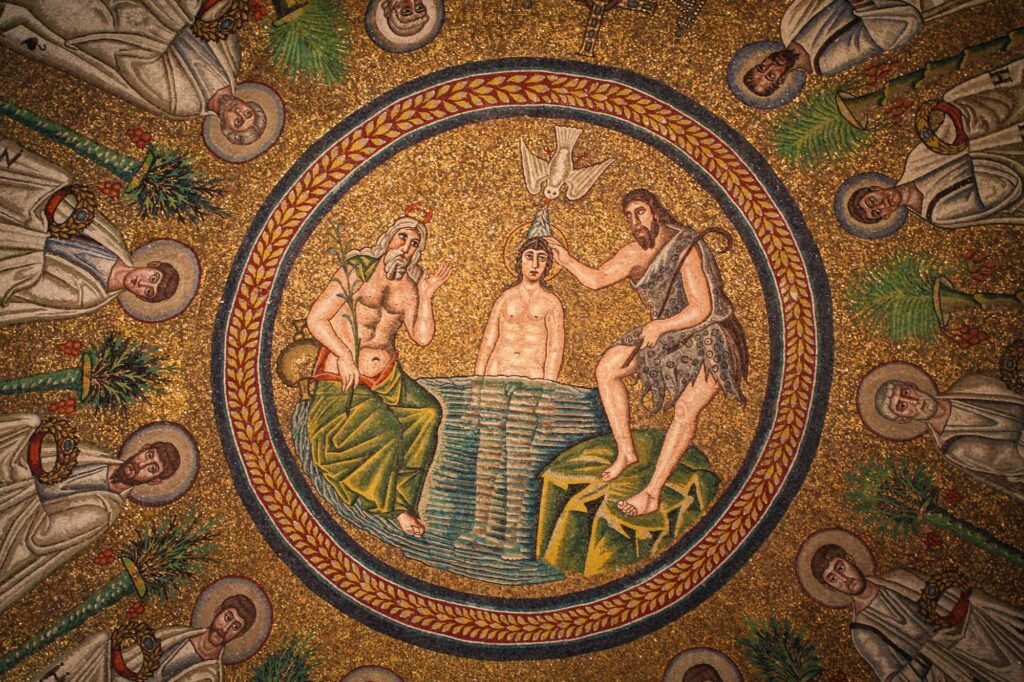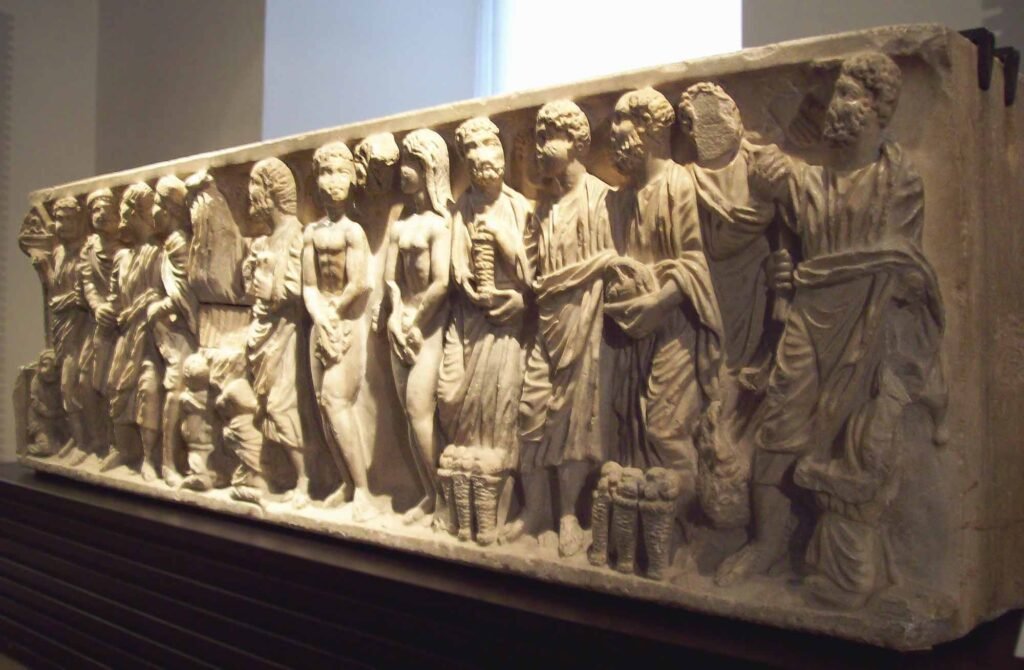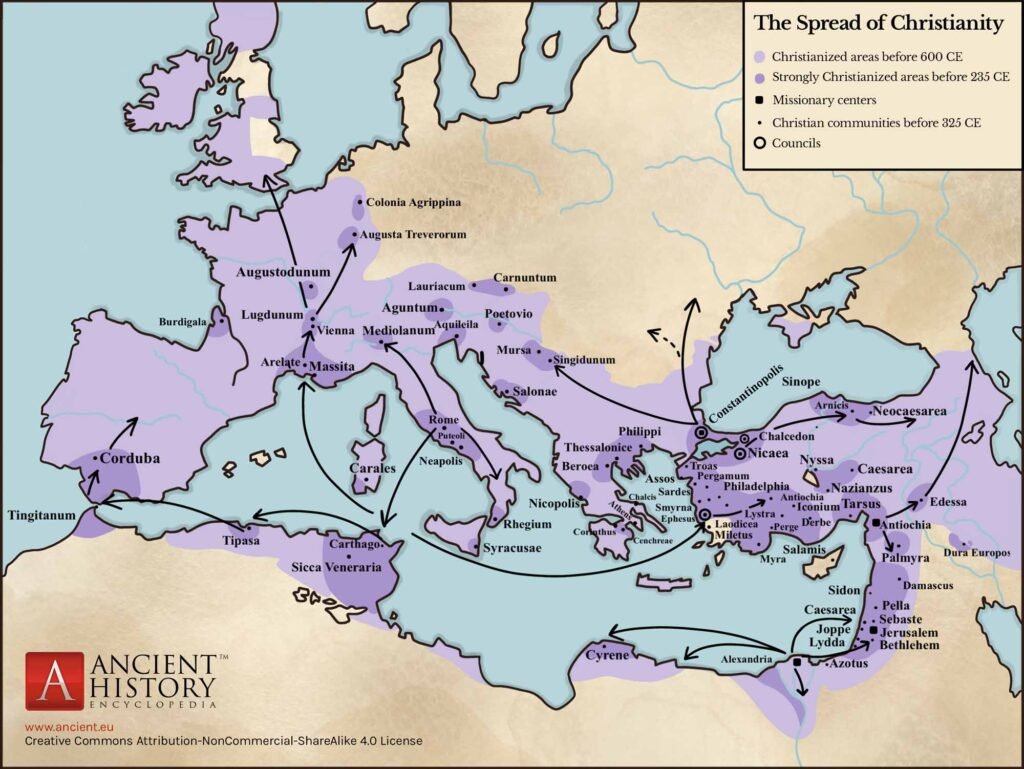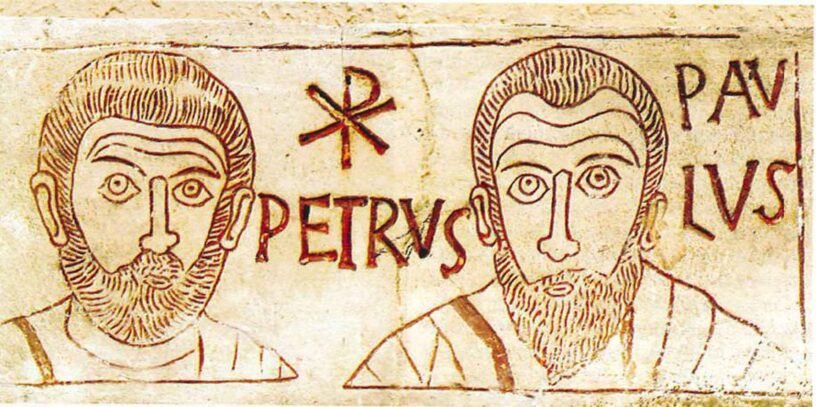Early Christianity played a pivotal role in shaping the religious and cultural landscape of the ancient world. Here we’ll explore the core teachings of early Christianity and Gnosticism, their similarities and differences, and try to illuminate the subtle nuances and distinctive features that set them apart. The dynamic interplay between these two influential ideologies, unravels a narrative that reflects the rich complexity of the ancient religious landscape.
Early Christianity

Origins of Early Christianity
Early Christianity emerged in the 1st century AD, in the eastern Mediterranean region, particularly in modern-day Israel, Palestine, and Syria. The origins of the movement lay in the teachings of Jesus Christ, who lived in the region during the first century AD. According to the Gospels, Jesus’ teachings emphasized love, compassion, and social justice, drawing large crowds of followers to him.
After Jesus’ death, his apostles continued to spread his message, interpreting his teachings and developing Christian theology. The apostle Paul was particularly influential, spreading the message of Christianity throughout the Mediterranean world and beyond. Early Christian teachings were influenced by Judaism, with many early believers being Jews themselves. However, the faith quickly gained traction among the Gentiles as well, leading to its rapid spread throughout the ancient world.
Early Christianity was a diverse movement in its early days, with different groups and sects interpreting Jesus’ teachings in different ways. Nevertheless, several core beliefs and practices emerged that defined the faith. These beliefs centered around Jesus’ message of love, forgiveness, and salvation, with early Christians believing that Jesus was the promised Messiah who had come to save humanity.

These beliefs were communicated through the Gospels, which outlined the life and teachings of Jesus, and through the letters of Paul and other apostles, which provided theological guidance to the early Christian community.
As Christianity spread, it faced persecution and hostility from the Roman Empire, which saw the faith as a potential threat to its power. Despite this opposition, Christianity continued to grow, and by the 4th century AD, it had become the dominant religion of the Roman Empire, laying the foundation for the development of Western civilization as we know it today.
Core Beliefs and Practices of Early Christianity
Early Christianity was characterized by certain core beliefs and practices that defined the faith. Central to the faith was the belief in monotheism, with early Christians maintaining that there was only one true God who was the creator of the universe.
Jesus Christ was regarded as the Son of God and the savior of humanity, with his message of love, forgiveness, and salvation forming the basis of early Christian teachings.
The early Christian community also placed great emphasis on moral teachings, with Jesus’ teachings on love, compassion, and justice forming the backbone of the faith. Early Christians were expected to live a virtuous life, treating others with kindness and respect, and striving to live up to the moral standards outlined in the Bible.
Prayer was also another important aspect of early Christian life, with believers encouraged to pray regularly and to seek a close relationship with God. The sacraments were also highly significant, with baptism and the Eucharist forming central aspects of Christian worship. Baptism was seen as a symbol of the Christian’s spiritual rebirth, signifying their entry into the faith. The Eucharist, or Communion, was a ritual meal that commemorated the last supper of Jesus Christ, with believers consuming bread and wine as a symbol of Jesus’ body and blood.
Finally, early Christians believed in the concept of eternal life, believing that the soul was immortal and that believers would be resurrected to spend an eternity in Heaven. This belief provided comfort to believers, particularly in times of persecution or hardship, and was a central tenet of the faith throughout its early development.

Core Beliefs of Gnosticism
Around the same time as Christianity, a mystical movement known as Gnosticism emerged, captivating the hearts and minds of many seekers of spiritual truth. Gnosticism presented a unique understanding of the universe, human nature, and the pursuit of enlightenment. Originating in the 2nd century AD, Gnosticism gained popularity and posed a significant challenge to early Christianity.
At the heart of Gnosticism lay the concept of gnosis, a Greek word meaning “knowledge” or “spiritual insight.” Gnostics believed that true spiritual wisdom was attained through the inner awakening of the divine spark within each individual. It was not merely a knowledge obtained through external sources, but a transcendent experience unlocking secrets that lay beyond the material world.
Gnostics saw Jesus as a divine messenger, sent to impart gnosis and guide humanity towards illumination. They considered him a prominent teacher, but his death and resurrection were seen as secondary to the pursuit of spiritual knowledge and liberation from the material realm.
Gnostics regarded the physical world as a flawed or even malevolent domain. They believed the material world was the creation of a lesser deity and viewed it as a prison or illusion that hindered one’s spiritual awakening.
Gnostic cosmology included a complex system of emanations and aeons, encompassing multiple levels of existence. Central to this belief system was the idea of the divine spark, or divine essence, trapped within the human soul. Gnostics believed that by awakening this divine element, individuals could transcend the limitations of the material world and attain a state of ultimate enlightenment.
Gnosticism emphasized personal revelation and direct experience. Gnostics believed that true spiritual insight could only be achieved through the inner journey, by reconnecting with the divine spark within themselves, rather than relying on external religious structures or institutional authority.

Gnosticism vs Christianity: Key Differences
Jesus and the Sacrifice
Early Christianity viewed Jesus’ death and resurrection as the central event in human history, pivotal for humanity’s redemption. According to early Christian belief, Jesus’ sacrifice on the cross paid the price for human sin, allowing believers to enter into eternal life and be reconciled with God. The resurrection affirmed Jesus’ divinity and the promise of eternal life for those who put their faith in him. Early Christians saw Jesus as the Messiah who had come to save humanity, and his sacrifice was the ultimate expression of God’s love for his creation.
In contrast, Gnosticism saw Jesus as a divine messenger who had come to impart spiritual knowledge (gnosis) to humanity. Gnostics acknowledged Jesus’ teachings but did not place the same emphasis on his death and resurrection. Instead, they emphasized the pursuit of spiritual knowledge and the realization of one’s divine nature.
Relationship with the Created World
Early Christianity upheld the goodness of creation, seeing it as the work of God and a reflection of His nature. This belief led early Christians to emphasize the importance of caring for the natural world, seeing humans as stewards of God’s creation. Early Christians believed that God’s presence could be found in all things, and the material world could be used to glorify God and serve others.
On the contrary, Gnosticism saw the physical world as inherently flawed or even evil, viewing it as the creation of a lesser, imperfect deity. Gnostics believed that the material world was a product of ignorance and enslavement and that the true reality lay beyond it. As a result, Gnosticism often rejected traditional religious practices and places of worship, seeing them as perpetuating the illusion of the material world.
Human Nature
Gnosticism viewed humanity as inherently divine, believing that the soul was a fragment of the divine spark that lay within everything. Gnostics believed that the goal of life was to achieve gnosis and to realize one’s true nature, beyond the constraints of the physical world. Gnostics tended to reject the idea of original sin, believing that humans were pure and that sin was a product of ignorance and the material world.
Unlike them, early Christians stressed the fallen nature of humanity and the need for redemption. According to Christian belief, humans were created in the image of God but had fallen from grace through disobedience and sin. However, through the sacrifice of Jesus Christ, believers could be reconciled with God and restored to their original state of grace. Early Christians believed that human nature was flawed and that only by accepting God’s grace could humans accomplish the good works that God had prepared for them.
Authority
Early Christianity relied on apostolic authority and the Bible for spiritual guidance, seeing the Scriptures as the inspired Word of God. Christian leaders were expected to adhere to the teachings of the apostles and to uphold the orthodox interpretation of the faith. Early Christianity stressed the importance of tradition and the transmission of the faith from generation to generation through the community of believers.
On the other hand, Gnosticism often rejected traditional authorities and emphasized the importance of personal revelation. Gnostics believed that spiritual truth could only be discovered through the awakening of the divine spark within each person, For them, the individual experience was the ultimate authority.

As time passed, Gnosticism faced opposition from orthodox Christianity and was ultimately branded as heretical. The influence of Gnosticism waned, leaving only fragmented writings and accounts of its teachings. Nevertheless, the allure of Gnosticism continues to captivate the curious, offering a window into the diverse landscape of spiritual beliefs and practices in the ancient world.
Gnosticism stands as a thought-provoking and enigmatic movement, marked by its emphasis on personal revelation, pursuit of mystical knowledge, and unique cosmological perspective. It provides a fascinating alternative to mainstream Christianity and invites us to explore questions of human existence and the search for transcendence. By uncovering the intricacies of Gnosticism, we gain a deeper appreciation for the rich diversity of spiritual thought that has shaped the world we inhabit today.




Leave a Reply